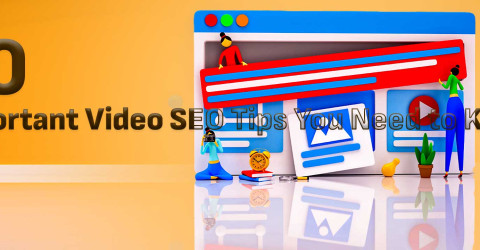

Shopify SEO Checklist to Rank on Search Engine
Online visibility is crucial for any business in digital marketing: the more visibility, the greater the reach impacting your customer acquisition and sales. If you are running a Shopify store, continue reading as we help you with simple tips and tricks to get ranked easily on search engines. Simple tops to optimize your Shopify website for better search engine visibility and improved ROI.
So start optimizing your site today!
Set up Google Analytics
It would help to have Google Analytics set up and running on your website for collecting user data. Google Analytics is one of the most prominent analytics tools that give deep insights into users' landing on your website. Understanding how people interact with your site allows you to play around with user flow to give a better user experience.
Installing Google Analytics is easy, and you can also refer to many online videos.
GA will give you a tracking code to be placed in specific parts of your website. The tracking code is to be inserted into your site's HTML. Once the code is in place, Google Analytics will collect data about your website traffic. You can then use the data to track page views, unique visitors, and bounce rates.
This data is a goldmine you can analyze to make necessary changes in the site and boost your conversion.
Set up Google Search Console
Google Search Console helps you to submit a sitemap for Google crawler to index your site. It also helps you to see problems the crawler might be facing and the errors that the indexing might have created.
To set up a Search Console, website owners must create a Google account and add their site.
Once the site is verified, you can start using the search console by submitting your sitemap. For example, you can use the Search Analytics report to see which queries are bringing people to your site and the Sitemaps feature to submit their sitemap to Google. By taking advantage of these resources, website owners can ensure the site appears in search results and receives the traffic they want.
Keyword Research for SEO
Good keyword research helps you identify the keywords you will be targeting through SEO, along with an insight into their competition and potential traffic. Once the keyword list has been finalized, you need to map pages to each keyword. You can club closely related keywords to target the same page. Blog pages help you to target keywords for which regular pages might not be available.
You will then have to seamlessly include these keywords in the content of the respective page. Ensure they are not stuffed, as it gives a bad user experience. You can also include these keywords in the meta title, description, and alt text of images.
By optimizing your site for search engines, you can attract new visitors and ensure that your business is visible to those most likely to make a purchase.
Use Keyword Research Tools for SEO on Shopify
One way to improve your ranking is by using keyword research tools. These tools can help you to find the right keywords to use on your website and in your marketing materials. Getting ranked on the right keywords help you to boost traffic and sales.
Using these tools ensures you use the most effective keywords for your business.
Map Your Keywords to Content Types
But once you've identified a set of target keywords, how do you know which content types will be most effective in helping you rank for those keywords? One way to map keywords to content types is to consider the intent behind each keyword.
For example, if you're targeting the keyword "buy shoes," that suggests the searcher is looking to make a purchase. In that case, product pages and e-commerce SEO would be your best bet. If you're targeting the keyword "how to clean shoes," that suggests that the searcher is looking for information. In that case, articles or blog posts would be a better fit. By understanding the intent behind each keyword, you can ensure that your content is well-aligned with your target audience.
Prevent Keyword Cannibalization
Keyword cannibalization is basically when distinct keywords are targeting the same page. In all probability, only one of the keywords will get ranked, and others will not. When it comes to SEO, keyword cannibalization can be a significant problem. It indicates that You did not do your keyword and page mapping right, and you need to see your SEO plan to make changes.
The best way to avoid keyword cannibalization is to carefully select the keywords you want to target. Make sure that each keyword is unique and relevant to your content. In addition, use different variations of your keywords throughout the page.
Optimize Shopify Meta RobotsTag
Meta Robots Tag: Meta descriptions are the brief descriptions that appear under your store's listing in a search engine, so it's essential to ensure they're catchy and relevant. On the other hand, titles appear at the top of your store's page, so it's essential to choose ones that are eye-catching and will encourage customers to click through.
By taking the time to optimize your meta descriptions and titles, you can make a significant impact on your store's visibility and traffic.
Include Keywords in Page URLs
Users seldom click beyond the first page of results in a search engine, so your website needs to appear on that first page. One way to ensure this is to include keywords in your page URLs. When a search engine crawls your website, it looks at the URL of each page to determine the about page.
Including the keyword in the URL helps in SEO ranking as it is one factor that search engines consider. In addition, users are more likely to click on a result that includes the keywords.
Optimize Image Alt Tags and Filenames
When optimizing images for web page ranking, many factors come into play. The most important of these are the file name and the alt tag. The file name is the name of the image file, while the alt tag is the text that appears in place of the image if it can't be displayed.
Both should be descriptive and keyword-rich so that search engines can index the image properly. In addition, the file size should be as small as possible to avoid slowing down the page's loading time.
Optimizing images holds a lot of weight in SEO as they take lots of bandwidth before the page gets rendered.
Have a Strong Link Building Strategy for e-commerce
In today's competitive marketplace, it is essential to have a strong e-commerce link-building strategy. First, links help to improve search engine rankings. The High DA PA of the website from which the links are coming sends a signal to search engines that your website is good and more relevant.
Additionally, links can help to increase traffic levels. When potential customers see links to your website from other websites, they are more likely to click through and visit your site.
Finally, links can help in building trust and credibility. When customers see that other reputable websites link to your website, they are more likely to believe it is trustworthy. As a result, a well-executed link-building strategy can be essential for any e-commerce business.
Fix Technical SEO Issues
Technical SEO can be complex and time-consuming. However, you can take some basic steps to improve your website's SEO. Crawl errors prevent pages from being indexed and should be resolved soon. To fix crawl errors, identify them using a tool like Google Search Console and correct them on your website.
Second, use a responsive theme for your website. A responsive theme ensures your website looks aesthetically beautiful across different screen sizes.
Third, fix any broken links on your site's pages and blogs.
Broken links give a terrible user experience as it leads nowhere and is considered by search engine in their SEO factors.
Finally, optimize your page speed for SEO on Shopify. Faster pages lead to better user experiences and higher rankings in search engines.
Use Content Marketing for Shopify SEO
Any online business owner knows that SEO is essential for attracting web traffic and boosting sales. And while many complex factors go into SEO, one of the simplest and most effective ways to improve your ranking is through content marketing.
In addition, content marketing can help build trust and credibility with potential customers, encouraging them to make a purchase. So, if you want to improve your Shopify SEO, focus on creating great content.
Boost Your SEO Efforts with Other Marketing Channels
In addition to optimizing your website for search engines, you should also use other marketing channels to promote your business. For example, social media is a great way to reach potential customers and generate interest in your products or services.
Paid advertising helps you to build rapport and trust with search engines which further helps you in SEO. By using a combination of SEO and other marketing channels, you can leverage digital marketing for your business's success.
Use Shopify Apps and Tools to Rank Higher
Anyone who has tried to sell something online knows that ranking high in search results is essential. Visibility is the first criterion for sales. Fortunately, several Shopify apps and tools can help you rank higher in search results.
For example, the SEO Optimizer app can help you to optimize your titles and descriptions for maximum search visibility. The Google Keyword Planner tool can also help research keyword phrases that potential customers will likely use when searching for products like yours. Using these and other devices can give your Shopify store the boost it needs to attract more visitors and sales.
Final Word
While this is not an exhaustive list, following these tips should put you on the right track to optimizing your Shopify store for search engines. Have you tried any of these methods to improve your SEO? What has been your experience? Let us know in the comments below!
Recent Posts
Critical elements in e-commerce website
How to do Social Media Marketing Automation?
10 Important Video SEO Tips You Need to Know
How to Attract Customers to Your eCommerce Store
What Are the Best SEO Strategies
How to do Local SEO for Large Enterprises
Shopify SEO Checklist to Rank on Search Engine
The Ultimate Guide to The Meta Robots Tag
What is SEO Marketing
How to Set up Google Analytics (GA4)
What is Schema Markup
What is Digital marketing
How to Drive More Traffic to Your Website
Why is Digital Marketing Significant
Tips for Scaling your SEO Content Strategy
Link-building Techniques You must know!
Advanced Content Promotion Strategies for 2022
The Ultimate Guide to Technical SEO
Best Digital Marketing Strategies for Startups
Ultimate List of Ecommerce Tools for 2022
Website Design Statistics You Should Know In 2022
How to do SEO for Ecommerce Website
How to Optimize Blog Posts for SEO
How to Build an Ecommerce Website Step-by-Step
Blog Categories
Comments on Shopify SEO Checklist to Rank on Search Engine
Please keep your views respectful and not include any anchors, promotional content or obscene words in them. Such comments will be definitely removed and your IP be blocked for future purpose.





